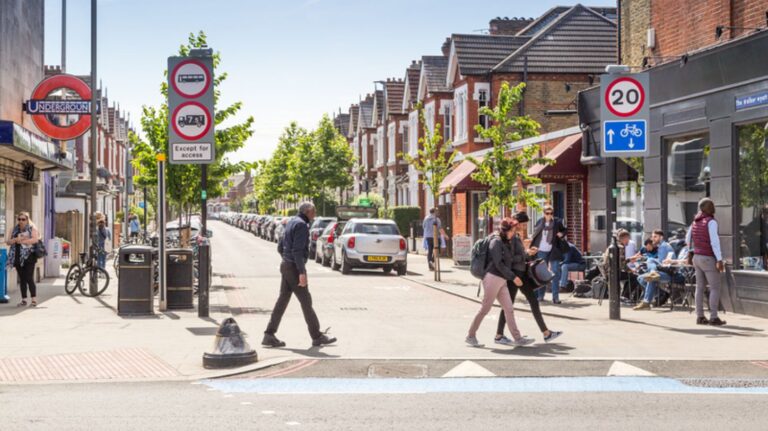A new map of London shows the levels of road traffic injury inequality in the UK capital.
Developed by Transport for London (TfL), the Vision Zero Inequalities Dashboard tool is reportedly the first of its kind in Europe and shows how deprivation is linked to higher road casualty levels.
The dashboard enables users to filter the data on the relationship between deprivation levels and road casualties by year, borough, casualty severity and mode of travel, while the mapping function allows users to explore areas of higher casualty or casualty location rates.
Casualty data available runs from 2017 up to the end of 2022 and will be updated annually. Remaining data covering this time period on age and gender will be added later this year, said TfL.
London collision data is collected by the Metropolitan Police Service and the City of London Police or reported to the police by members of the public.
READ MORE: TfL announces cycling updates to Google Maps
TfL will use the data from this dashboard to inform its own investment priorities and provide the data to boroughs to develop their local implementation plans.
TfL has met and shared the findings of the dashboard with the boroughs with the top five highest casualty rates and top five highest casualty location rates.
It will continue to work with boroughs and stakeholders to analyse the cause of inequalities in road injury, help target future road danger reduction programme planning and investment for infrastructure schemes and drive further action to reduce road danger inequalities.
READ MORE: TfL unveils Bus Safety Strategy to achieve Vision Zero goal
Lilli Matson, TfL’s chief safety, health and environment officer, said: “We’re delighted to publish this valuable new tool to enable people to see where and how action most needs to be taken to reduce road danger and inequality in London.
“Protecting everyone on the road is a priority for us and we will continue to research how road risk varies for certain groups of Londoners and engage with boroughs, police and other stakeholders to reduce these inequalities.
“Without safe streets we know that people won’t choose the most healthy and sustainable modes of transport and there is still much more to do to eradicate road deaths and serious injuries.”
READ MORE: TfL issues 12-month warning ahead of strengthening DVS requirement
The dashboard forms part of TfL’s goal to eliminate death and serious injury from London’s roads and transport networks by 2041, and follows publication of the Inequalities in road danger in London (2017-2021) report earlier this year, which focused on the collision location and the demographic characteristics of the people who are injured.
The report found that, in London, the more deprived the area, the higher the risk that someone travelling in that area will be seriously injured or killed in a road traffic collision in that area, with the 30% most deprived postcodes having more than double the number of casualties per kilometre of road network compared with the least deprived 30%.
Furthermore, the report found that the same is also true for people living in London’s more deprived areas who are travelling in London as a whole.
READ MORE: More action needed to prevent death and injury on London’s roads
According to the report, the more deprived the area someone lives in, the higher the risk they will be injured or killed in a road traffic collision wherever they are travelling in London, with people from the 30% most deprived home postcodes having nearly double the risk of people from the least deprived 30%.
Likewise, the dashboard shows that the data for people killed or seriously injured in 2022 continues to show these trends, said TfL.
Achievements and innovations in road safety will be celebrated at the third annual CiTTi Awards, which will be held on 26 November 2024 at the De Vere Grand Connaught Rooms in London. Nominations officially open in March 2024. Please visit www.cittiawards.co.uk to learn more about this unmissable event for the UK’s transportation sector.





